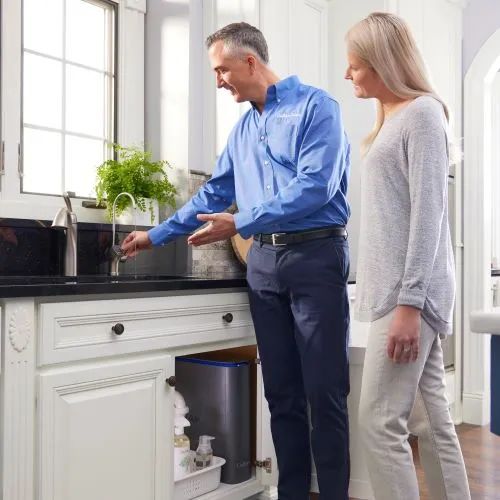
What Is Reverse Osmosis?
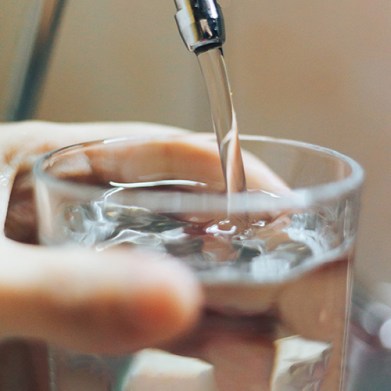
If you want to take your water filtration system to the next level, look no further than reverse osmosis. You may be scratching your head right about now, wondering, “What is reverse osmosis, and what does it have to do with my water?” Let us explain how it works and explore the benefits of reverse osmosis water.
How Does Reverse Osmosis Work?
One of the most common uses for reverse osmosis is desalination, which is the process of removing salt from seawater to make it safe to drink. But what does reverse osmosis mean?
Reverse osmosis happens when pressure is applied to a highly concentrated solute solution (in this case, the saltwater) to force it through a semi-permeable membrane that allows only water to pass through. This process leaves a higher concentration of solute (salt) on one side and only the solvent (freshwater) on the other. What it boils down to is cleaner, fresher-tasting water.
The same reverse osmosis method can be applied to help remove other minerals, substances, and impurities from the water that runs throughout your house. In a typical reverse-osmosis water filtration system, water first flows through a prefilter to remove larger sediment (sand and dirt, for example) and then through an activated carbon filter, which reduces chlorine taste and odor.
In the reverse osmosis stage, water flows across a semipermeable membrane that separates the water from the dissolved solids that may be present. What you are left with is cleaner, great-tasting water that is virtually free of dissolved solids. Advanced reverse-osmosis products may also include additional filtration stages depending on the system and the user’s needs.
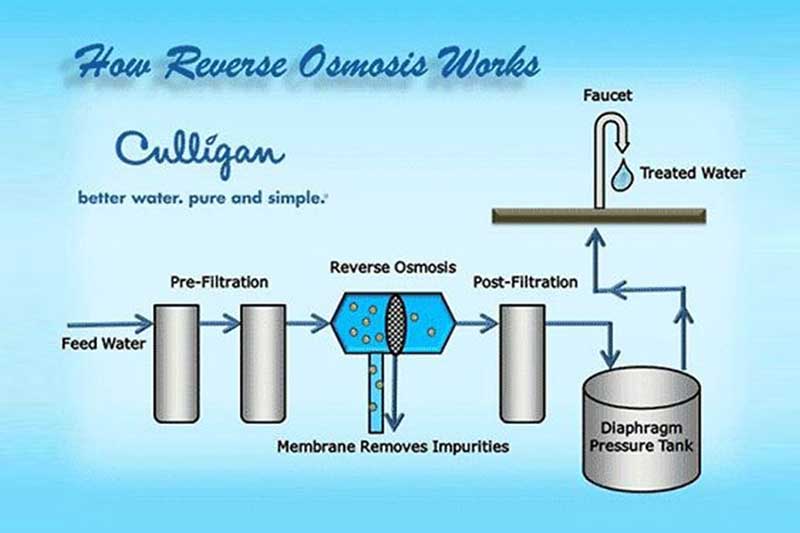
Is Reverse Osmosis Water Better for You?
Reverse osmosis filtration doesn’t just ensure great-tasting water; it also can help ensure that the water your household depends upon is cleaner and safer.
Reverse osmosis can filter out 99% of contaminants currently found in tap water. That said, reverse osmosis has a greater impact on some substances than others. What is not reduced by reverse osmosis? Contaminants such as chloramine, volatile organic compounds (VOCs) and “forever chemicals” such as PFOS and PFOA are less effectively removed by reverse osmosis alone. However, with additional filtration layers in addition to reverse osmosis (such as Culligan’s Total Defense Cartridge), advanced reverse osmosis systems also can address these potentially harmful components.
Bottom line: If you’re looking for peace of mind with the water you and your family consume every day, the advanced, multistep filtration offered by reverse osmosis systems can provide it.
Culligan Reverse Osmosis Filtration Systems
The best reverse osmosis system for your home will depend upon your water use, space requirements and budget. Culligan applied its more than 80 years of water-treatment expertise in developing proprietary reverse osmosis membranes and incorporates these in a variety of reverse osmosis systems designed to offer flexibility and uncompromising quality:
Aquasential® Tankless RO Advanced Drinking Water Filter System
- Aquasential’s reverse osmosis membrane can reduce total dissolved solids by 95%
- Composite and carbon filters further help remove particulates and eliminate bad tastes and odors
- Sleek, tankless, under-sink design offers space savings vs. traditional tank options
Aqua-Cleer® Advanced Under Sink Drinking Water Filter System
- With 13 filter options (the most available on the market), Aqua-Cleer offers unparalleled system customization
- Five stages of filtration remove total dissolved solids by up to 99%
- Specialized filters are available to help remove arsenic, volatile organic compounds (VOCs) and benzene.
- The durable, high-quality steel tank (available in a variety of sizes) includes an automatic shutoff valve
AC-30 Good Water Machine Under Sink Water Filtration System
- The AC-30 offers three stages of filtration, including reverse osmosis and a post-RO carbon filter
- Durable, high-quality steel tank with automatic shutoff valve
- Optional monitor light on faucet that indicates when it’s time to change filters
What kind of maintenance is required with a reverse osmosis system? As with any water-filtration system, RO systems need periodic maintenance to continue operating at maximum effectiveness. The Water Quality Association notes that for RO systems, this involves replacing prefilters, postfilters and reverse osmosis membrane modules. With Culligan RO drinking-water systems, smart sensors can let you know when components need to be replaced, so you’re not removing them too soon or too late.
Reverse Osmosis Water: A Step Forward for Your Drinking Water
Reverse osmosis is the most effective way to “broad-treat” your water—to address the widest range of potential contaminants and impurities in your home’s drinking water. Reverse osmosis filtration can help provide peace of mind for your family for today and tomorrow.
Your home’s specific water filtration needs will depend on what’s present in your water and the taste/odor/quality issues you want to address. To learn more about your home’s water quality—from water hardness to the presence of undesired chemicals—a water test is the best first step.
Related Articles
How To Remove Chlorine From Water
9 min read
Find A Location Near Me

Schedule Your Free
In-Home Water Test
Get better water in your home by scheduling an appointment with your local Culligan Water Expert.
Discover More
See All Articles

Can Drinking Water Prevent Flu Symptoms?
Although drinking water is an important part of staying healthy, H2O alone may not be enough to prevent flu symptoms. Instead, it helps your body perform key functions, which boosts […]
6 min read

Explore

Explore
Our Products
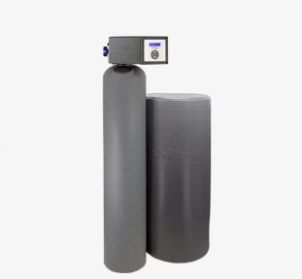
Water Softeners
With any of our soft water systems, get more out of your water-using appliances while spending less on energy and detergent.
View Products
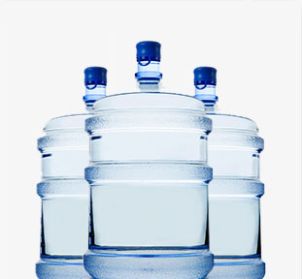
Water Delivery
There’s never been a better time to enjoy the convenience of scheduled bottled water deliveries from the Culligan® Water Experts
View Products
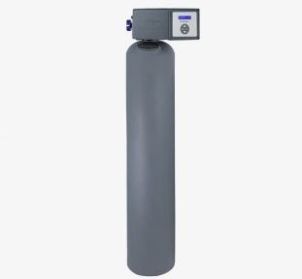
Water Filtration Systems
Culligan's water filtration systems have improved water quality for thousands of families worldwide.
View Products
